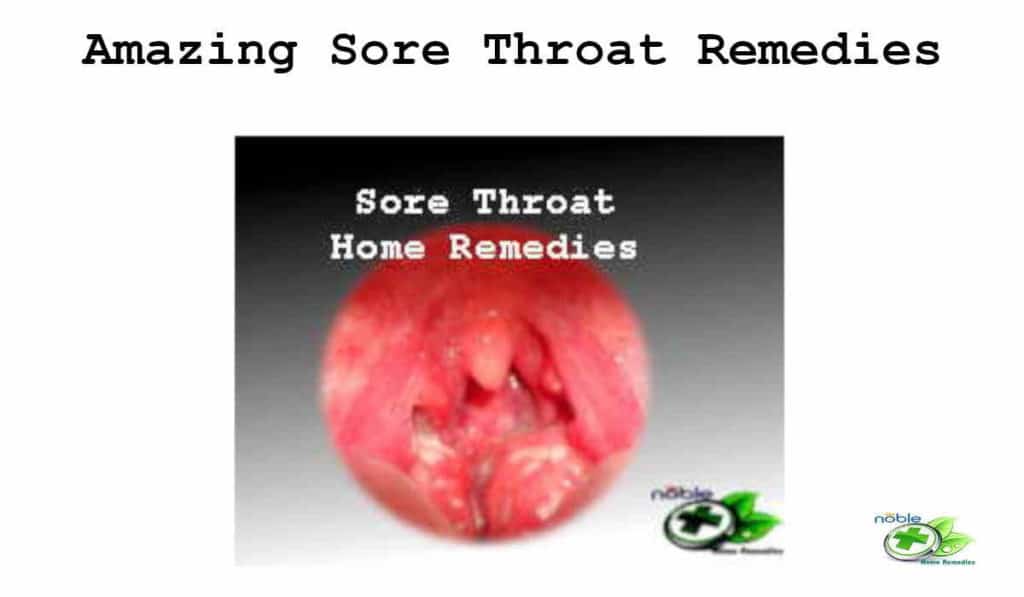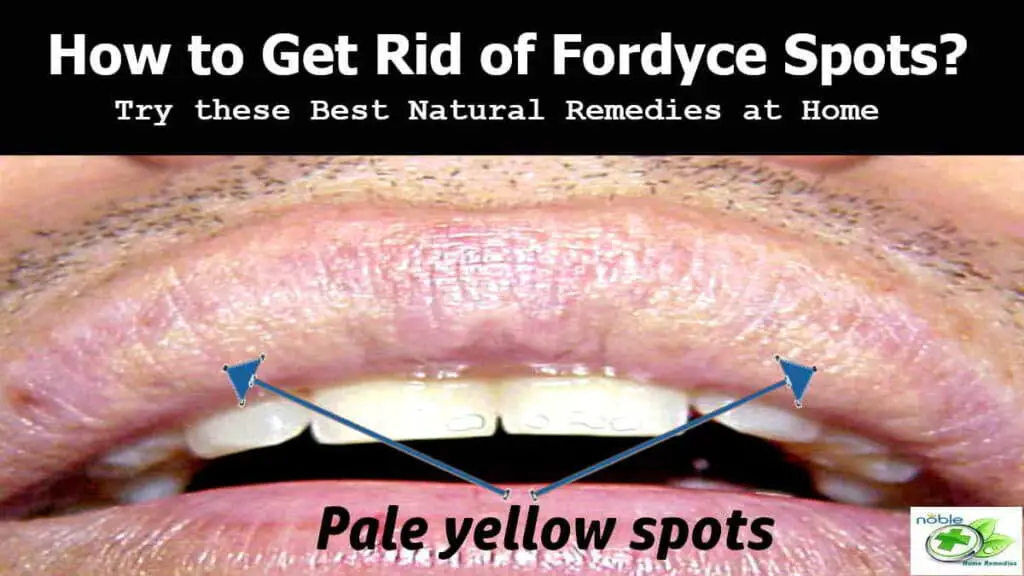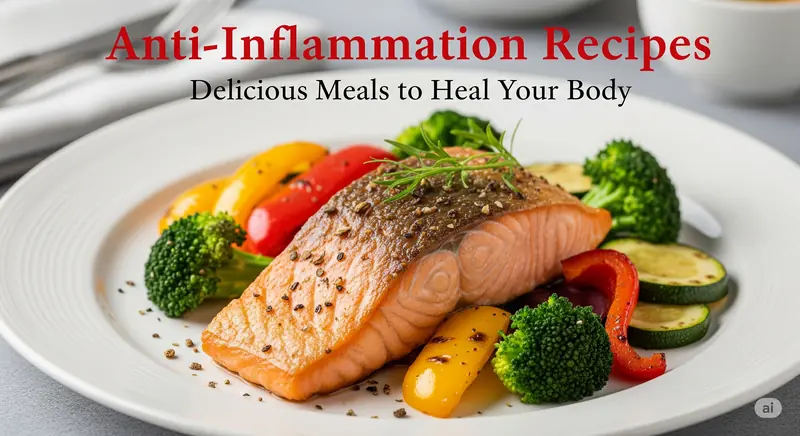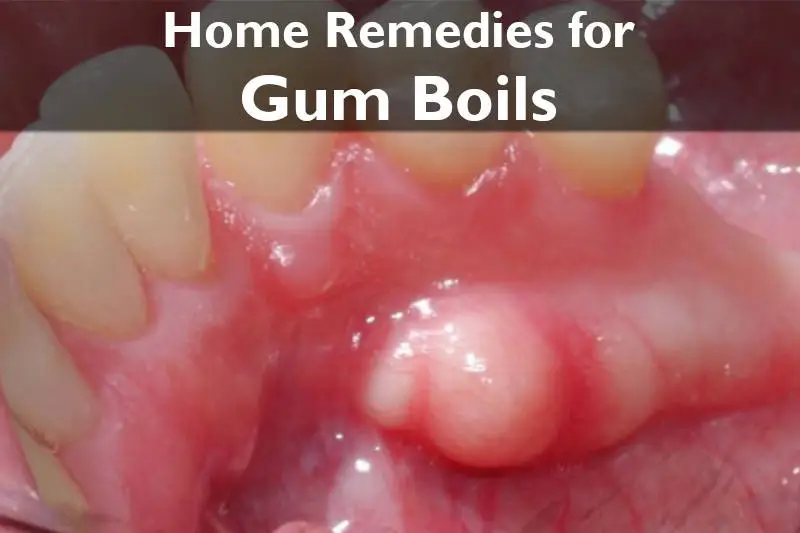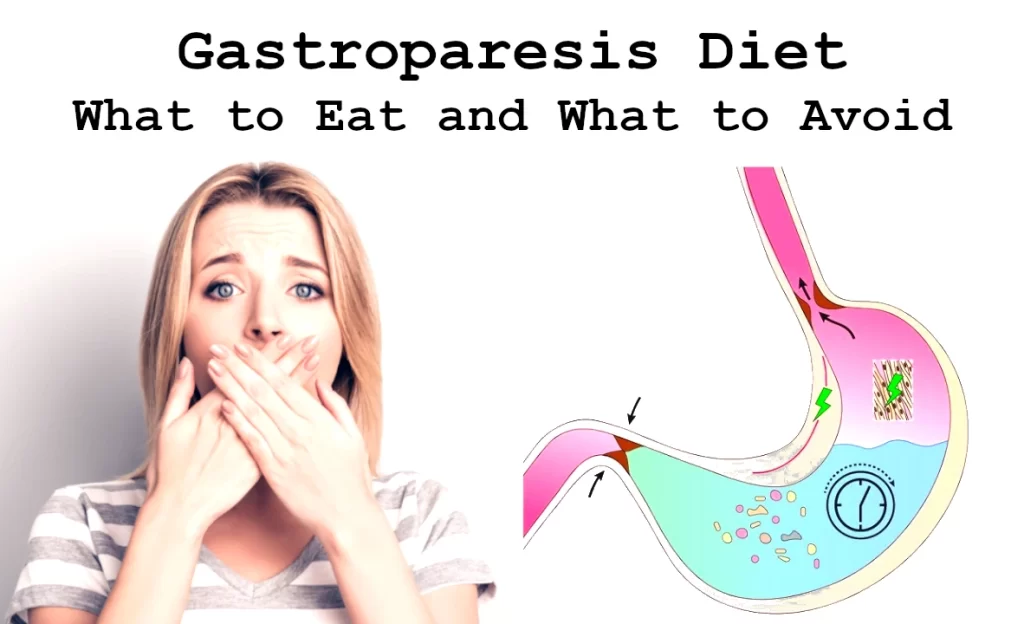Yeast Infection Remedies: Your Ultimate Guide to Fast Relief

Experiencing a vaginal yeast infection can be incredibly uncomfortable and disruptive to your daily life. The itching, burning, and irritation can make you desperately seek speedy relief. While you might be looking for quick and natural “yeast infection remedies” you can try at home, it’s important to understand what a yeast infection is and when to seek professional medical help for the fastest and most reliable solutions. This guide will walk you through common home remedies, discuss their effectiveness, and highlight crucial considerations for your health.
Understanding Vaginal Yeast Infections & The Quest for Quick Relief
If you’re dealing with vaginal discomfort, you’re not alone. Many individuals with a vulva and vaginal area experience a yeast infection at some point in their lives. It’s a very common condition, so let’s break down what’s happening and why quick relief is often a top priority.
What is a Vaginal Yeast Infection?
A vaginal yeast infection, also known as vaginal candidiasis or thrush, happens when there’s an overgrowth of a fungus naturally present in the vaginal area
. The most common culprit is a type of yeast called Candida albicans. Normally, this yeast lives harmlessly in your body, including your throat, gut, and vaginal area, without causing issues. However, when something disrupts the natural balance of bacteria and yeast in your vaginal area, Candida can multiply out of control, leading to an infection.
The symptoms of a yeast infection can be quite bothersome. They often include irritation and inflammation in and around the vaginal area. You might experience intense itching, a burning sensation during urination or sex, and even pain during sex. A tell-tale sign is a thick, white vaginal discharge that often resembles cottage cheese and is usually odorless, or sometimes has a slight yeast or dough-like smell. You might also notice tenderness or swelling around the vaginal area and possibly a rash. These symptoms can definitely make you want fast relief!
The Pursuit of Fast Relief: Home Remedies vs. Medical Treatments
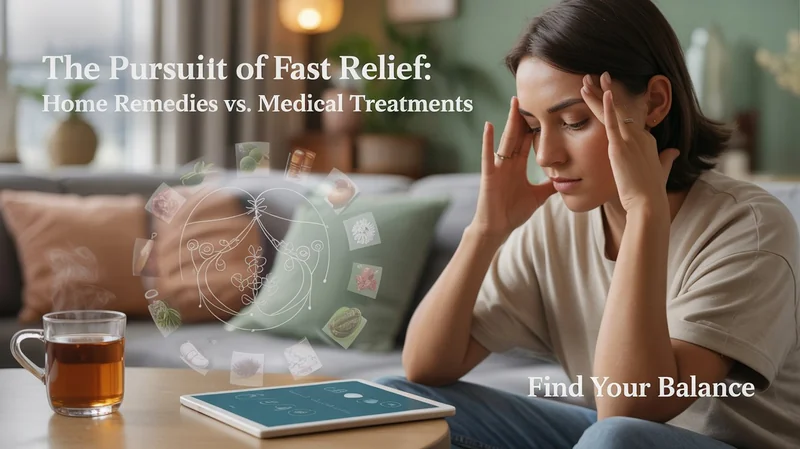
When symptoms strike, it’s natural to immediately look for “yeast infection remedies” that can provide quick comfort. Home remedies are often explored as a way to get temporary symptom relief or to complement professional medical treatment. Many people turn to these options because they seem like natural, quick fixes that can be tried without a doctor’s visit.
However, it’s important to understand that while home remedies can be helpful for symptom management, a medical consultation is often the fastest and most reliable way to get rid of a yeast infection entirely. Prescription medications, such as a single oral dose of fluconazole, are highly effective and can often clear symptoms within 24 to 72 hours, with full resolution in about a week. Over-the-counter (OTC) antifungal creams, tablets, or suppositories also offer effective relief.
Before diving into home remedies, it’s always recommended to visit a healthcare professional, especially if it’s your first time experiencing symptoms. This is crucial to ensure you truly have a yeast infection and not another condition with similar symptoms, like bacterial vaginosis (BV) or a sexually transmitted infection (STI). Getting the right diagnosis means getting the right treatment, which is key to speedy and effective healing.
Home Remedies for Symptom Relief: What Works and How to Use Them
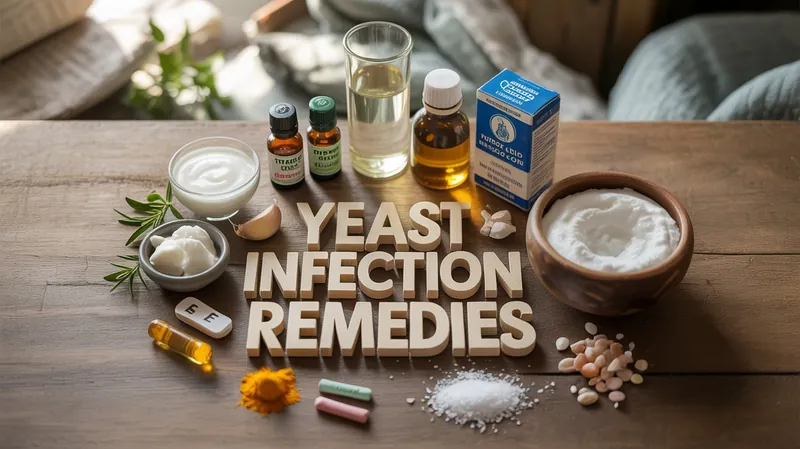
Many natural “yeast infection remedies” are talked about, from dietary changes to topical applications. While some offer promising relief, others come with important warnings. It’s vital to use them correctly and understand their limitations. Remember, while these remedies might help soothe symptoms, they are not always a guaranteed cure for the underlying infection.
1. Probiotic Power: Yogurt & Supplements
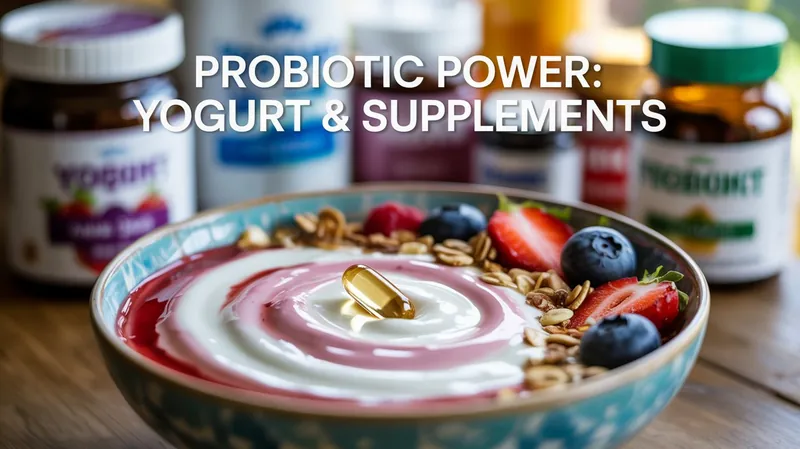
Probiotics are live microorganisms, like beneficial bacteria, that can help restore your body’s natural balance. In the context of yeast infections, they are thought to be effective against Candida albicans because they help bring the healthy bacteria and yeast in your vaginal area back into balance, preventing the yeast from overgrowing. The most commonly beneficial bacteria are Lactobacillus acidophilus.
- How to use:
- Eating Yogurt: One of the simplest ways to use probiotics is by eating plain Greek yogurt. The yogurt must not have any added sugar, flavoring, or fruit, as sugar can actually make the Candida fungus grow more. Eating yogurt can help expand your gut microbiome, which may help reduce yeast in your body overall.
- Probiotic Supplements: If you’re not a fan of yogurt, you can take probiotic supplements, which are available both orally and as vaginal suppositories. Oral supplements contain strains of Lactobacillus acidophilus that can help align your digestive tract and vaginal flora. While oral supplements might take several days to a few weeks to show full effects, vaginal suppositories are sometimes used for quicker results. Some studies suggest that oral Lactobacillus species were effective for both yeast infections and bacterial vaginosis. Another study found that adding vaginal Lactobacillus capsules to medication helped 89% of participants stay infection-free for a year.
- Yogurt and Honey Mixture: Some research suggests that a mixture of yogurt and honey can improve symptoms of vaginal yeast infections. Honey has natural germ-fighting properties that can stop fungus from growing. A 2015 study found this mixture improved symptoms, and a 2021 study even suggested it could be as effective as clotrimazole cream, a common medication. This mixture is typically applied inside the vaginal area using an applicator or tampon.
- Important Warnings: While some sources suggest applying yogurt vaginally, others caution against it. The sugar present in yogurt, even naturally occurring, may actually fuel yeast growth and could potentially lead to other infections or worsen the existing one. There’s also a lack of strong evidence to confirm that the beneficial bacteria from yogurt will actually “colonize” your vaginal area effectively when applied topically.
2. Antifungal Oils: Coconut, Tea Tree, and Oregano

Certain essential oils and natural oils are known for their antifungal properties and are often suggested as “yeast infection remedies.”
- Coconut Oil: This fatty oil, derived from coconuts, has recognized antifungal properties, especially against Candida albicans.
- How to use: To treat a vaginal yeast infection using coconut oil, be sure to buy pure, organic coconut oil and apply it directly to the affected area. It may help kill some of the yeast and soothe irritated, dry skin.
- Warnings: While generally safe for topical use, human research specifically on its full effectiveness for vaginal yeast infections is limited.
- Tea Tree Oil: Known for its ability to kill fungi, bacteria, and viruses, tea tree oil has confirmed antifungal properties against Candida.
- How to use: Tea tree oil is very potent and must always be diluted with a carrier oil, such as jojoba or coconut oil, before it touches your skin. The safest option is to purchase prepared tea tree vaginal suppositories. Some suggest diluting it and applying it to a tampon for overnight insertion. A 2016 study suggested a combination of probiotics and tea tree oil vaginal suppositories may help treat vaginal infections.
- Warnings: Never ingest essential oils internally. Avoid applying undiluted tea tree oil to your skin or near your vaginal area, as it can cause irritation, stinging, burning, or allergic reactions, especially if you have sensitive skin. Discontinue use if you experience any discomfort. There is insufficient reliable data about its use specifically for vaginal yeast infections.
- Oil of Oregano (from Origanum vulgare): This is different from the common oregano oil you find in your kitchen (Origanum marjoram). Oil of oregano, derived from wild oregano, contains potent antifungal compounds like thymol and carvacrol, which can inhibit Candida albicans growth.
- How to use: Like tea tree oil, the essential oil of oregano should never be ingested orally. You can mix 3 to 5 drops of the essential oil per ounce of a carrier oil, such as olive or sweet almond oil, and apply it externally to the skin (like inner wrists, back of the neck, armpit, or groin) or inhale it using a diffuser. Some sources mention inserting oil of oregano capsules vaginally. Lab studies have shown promise in inhibiting Candida growth, but more human research is needed to confirm its safety and effectiveness in the body.
- Warnings: Oil of oregano can act as a blood thinner, so it’s advisable to avoid using it if you suffer from blood-clotting issues or vitamin K deficiency.
3. Acidic Solutions & Antiseptics
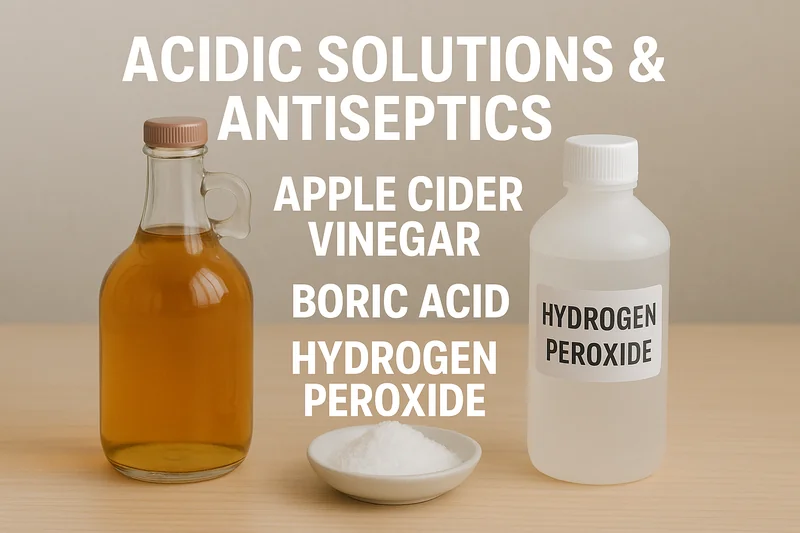
Certain acidic substances and antiseptics are also explored as “yeast infection remedies” due to their potential to create an unfavorable environment for yeast.
- Apple Cider Vinegar: Vinegar is thought to have antifungal properties that may inhibit Candida growth.
- How to use: A popular method is an apple cider vinegar bath. Add a half cup of apple cider vinegar to a lukewarm bath and soak for about 20 minutes. The acidic nature might help eliminate harmful microorganisms. You can also dilute it in water for external rinsing. Some people also add 2 tablespoons of apple cider vinegar mixed in warm water to their diet, drinking it before a meal.
- Warnings: Always dilute apple cider vinegar before it touches your skin, as its high acidity can irritate sensitive vaginal tissues. Do not douche with apple cider vinegar or any other substance, as douching can disrupt the natural balance of good and bad bacteria in your vaginal area, potentially making you more prone to recurrent infections. There is limited human evidence supporting its effectiveness for yeast infections.
- Boric Acid: The Boric Acid Tablets are a powerful antiseptic often used in vaginal suppositories. It can be helpful for yeast infections, especially those that are resistant to other remedies or for recurrent infections.
- How to use: The Centers for Disease Control and Prevention (CDC) suggests a dosage of 600mg of boric acid in a capsule inserted vaginally once a day for 2 weeks. It’s primarily used as a vaginal suppository.
- Warnings: Boric acid is toxic in large amounts and can cause serious harm, including kidney damage, acute circulatory system failure, or even death if absorbed excessively. It is crucial to never take boric acid orally. Avoid using it during pregnancy. Discontinue use if you notice any discomfort or if you have sensitive skin. While often grouped with home remedies, it’s more of a medical suggestion and best used under a doctor’s guidance.
- Hydrogen Peroxide: This is an antiseptic that can kill bacteria and yeast.
- How to use: Some people use hydrogen peroxide topically for yeast infections by diluting it with an equal amount of water and applying it to the genitals or adding it to a bath.
- Warnings: There is no strong research supporting the use of hydrogen peroxide to treat vaginal infections. It is recommended to avoid douching with hydrogen peroxide or using it internally, and not to use it for extended periods, as it can destroy beneficial bacteria in the vaginal area.
- Witch Hazel: This natural astringent has antimicrobial and anti-inflammatory properties. Witch hazel for yeast infection soothes irritation and reduces the associated itching.
- How to use: Witch hazel is typically applied externally. Some people soak a clean cotton pad in pure witch hazel extract (alcohol-free is preferred) and gently dab it on the affected area to relieve discomfort. It can also be added in small amounts to a sitz bath for soothing relief.
- Warnings: Witch hazel should not be used internally in the vaginal area, as it may disrupt the natural balance and cause further irritation. Always use pure, alcohol-free witch hazel to avoid dryness or stinging. It is a supportive remedy, but not a proven cure for yeast infections.
4. Dietary & Immune Support
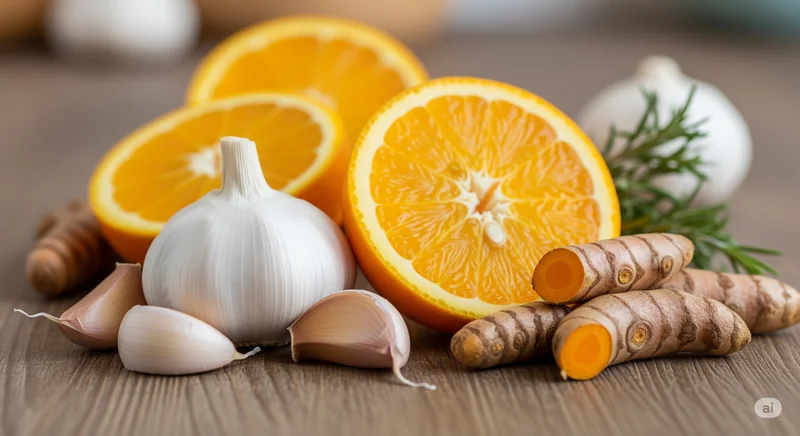
Supporting your immune system and making certain dietary choices can also play a role in managing yeast infections.
- Garlic: Garlic possesses antifungal and antibacterial properties that may help curb Candida growth. Lab studies have shown it can effectively curb Candida growth.
- How to use: If you want to try garlic as one of your “yeast infection remedies,” it’s best to simply add more garlic to your diet. A vaginal cream containing garlic and thyme was found to be as effective as clotrimazole vaginal cream in one study.
- Strong Warning: Do NOT insert garlic into your vaginal area. The active compounds in garlic can cause painful burns and irritation to the sensitive skin and mucous membranes of the vaginal area. There’s also a lack of solid evidence that this remedy works when used this way.
- Vitamin C (Ascorbic Acid): As an immune system booster with antimicrobial components, vitamin C can help your body fight off infection.
- How to use: You can try increasing your intake of vitamin C-rich foods or taking a vitamin C supplement to boost your body’s ability to fight the yeast infection.
- Warnings: Do not apply acidic vitamin C directly to the sensitive vaginal tissue. Its effectiveness for treating yeast infections hasn’t been proven in human studies.
- Vitamin E: This vitamin may help reduce inflammation caused by Candida albicans and soothe itching, burning, and inflammation. It also has antioxidants that protect the body from damage.
- How to use: Vitamin E is available as suppositories for vaginal use or can be applied as vitamin E oil to the vulva or vaginal area. It can also be taken orally or obtained through your diet (e.g., nuts, seeds, spinach). Research suggests vitamin E suppositories may help with vaginal atrophy, a condition that increases infection risk.
- Turmeric: This common spice contains curcumin, which has strong antifungal properties that may help treat vaginal yeast infections. Lab studies show curcumin can break down Candida biofilms, making the fungus weaker and potentially boosting the effects of antifungal medicines like fluconazole.
- Warnings: A human study found that while curcumin cream reduced symptoms, it wasn’t as effective as clotrimazole cream at fully eliminating the infection. More human studies are needed to confirm its effectiveness compared to standard antifungal treatments.
5. Soothing Baths & Rinses

Sometimes, simple baths and rinses can offer temporary relief from the uncomfortable symptoms.
- Baking Soda: Baking soda may help inhibit yeast growth and provide relief from itching.
- How to use: You can add a ¼ cup of baking soda to a bath or apply it to the skin as a paste. The International Menopause Society also suggests washing the vulva with a diluted solution of baking soda (½ teaspoon per 1 liter of water) to help relieve itching.
- Warnings: Baking soda can change vaginal pH and might cause irritation. It can also dry out irritated skin if used too frequently. If it gets inside your vaginal area, it could disrupt your vaginal flora, potentially worsening the infection. More research is needed on its effectiveness for yeast infections.
- Saltwater Rinses: Gently rinsing the affected area with saltwater may help soothe symptoms.
- How to use: Mix a half-teaspoon of salt into a cup of warm water and use it as a gentle rinse. Sitting in a warm bath with Epsom salt for about 10 minutes can also help relieve symptoms.
- Warnings: There is no evidence that sitting in hot saltwater can cure a yeast infection. Prolonged soaking in hot water is generally advised against, as it can promote yeast growth.
Crucial Considerations Before Trying Home Remedies
While the idea of using “yeast infection remedies” from your pantry is appealing, it’s vital to approach them with caution. Understanding the potential pitfalls and the importance of a proper diagnosis is key to your health.
A. Why a Proper Diagnosis is Key
One of the biggest issues with self-treating a suspected yeast infection is that self-diagnosis is often inaccurate. The symptoms of a yeast infection can very closely mimic those of several other vaginal conditions, which require different treatments.
- Mimicking Other Conditions:
- Bacterial Vaginosis (BV): Both yeast infections and BV cause vaginal inflammation, but a key difference is that BV typically produces a foul-smelling, fishy odor, unlike the generally odorless or dough-like smell of a yeast infection. BV also doesn’t usually cause redness and inflammation of the vulva, which yeast infections often do.
- Sexually Transmitted Infections (STIs): Conditions like chlamydia can present with similar discomfort.
- Skin Disorders: Various skin issues can cause vulvar itching, including atopic dermatitis or psoriasis.
- Hormonal Changes: Menopause, for instance, can lead to vaginal dryness and itching due to low estrogen levels.
- Vulvar Cancer: In rare cases, persistent vulvar itching could even be a sign of vulvar cancer.
- The Risk of Misdiagnosis: If you use a home remedy for a condition that isn’t actually a yeast infection, you could worsen the problem or significantly delay getting the correct and necessary treatment. For example, a bacterial infection requires antibiotics, while a yeast infection needs antifungal medication.
Therefore, it is always best to visit a healthcare professional for a first-time infection. They can ask about your health history, perform an exam, and take a sample of discharge for analysis to confirm the diagnosis and rule out more serious or different conditions. This initial step ensures you receive the most appropriate and effective care.
B. Effectiveness and Safety Concerns
Even when a diagnosis is accurate, the effectiveness and safety of “yeast infection remedies” can vary greatly.
- Varying Efficacy: The success of home remedies largely depends on the individual, the severity of the infection, and the quality of the ingredients used. While many people report relief with home treatments, the evidence for their success is mostly anecdotal, meaning it’s based on personal stories rather than large-scale, controlled human studies. Most studies that have been done often have limitations, like small sample sizes or a lack of control groups. This means there’s no guarantee that a home remedy will completely eliminate the infection without medication, especially for recurrent or persistent cases.
- Risks of Irritation and Worsening Symptoms: Many home remedies, if used incorrectly (for example, undiluted or internally), can lead to new or worsened problems. They can cause burning, irritation, or allergic reactions to the sensitive vaginal tissues. They can also further disrupt the natural vaginal pH, which might make the infection worse or pave the way for other infections. For instance, inserting garlic into the vaginal area can cause severe burns and pain.
- FDA Regulation: It’s important to know that herbs, supplements, and essential oils are not regulated by the Food and Drug Administration (FDA) for safety, purity, or quality. This means that what you buy might not be as pure or potent as advertised, making it crucial to purchase these products from reputable sources.
Therefore, while exploring “yeast infection remedies” at home can be tempting, it’s essential to be aware of these limitations and potential risks.
When to See a Doctor: Prioritizing Your Health

While home remedies can offer temporary comfort for vaginal yeast infection symptoms, sometimes they’re simply not enough, or your body might be telling you something more serious is going on. Knowing when to stop self-treating and when to seek professional medical help is crucial for your health and well-being.
Signs Your Home Remedy Isn’t Working:
- Your symptoms worsen or new symptoms appear at any point during your attempt at home treatment.
- Your symptoms do not improve within a few days of trying a home remedy. Most over-the-counter treatments for yeast infections should show improvement within a week.
- You experience persistent irritation that seems separate from your yeast infection symptoms.
- If the infection goes away with a home remedy but then returns shortly after, you likely need professional medical advice.
Specific Situations Requiring Medical Attention:
It’s always wise to connect with a healthcare professional, especially in these situations:
- If you are pregnant. Certain treatments, including some home remedies and medications, are not safe during pregnancy.
- If you have had four or more yeast infections within the last year. This is known as recurrent vulvovaginal candidiasis and could signal an underlying condition like uncontrolled diabetes or a resistant strain of yeast that requires stronger or longer-term treatment.
- If you have a weakened immune system, perhaps due to conditions like HIV, autoimmune disorders, or certain medications. Your body’s ability to fight off infections is compromised, making professional medical care essential.
- If you have unmanaged diabetes, high blood sugar can create an environment where yeast thrives, making infections more frequent and stubborn.
- If you are experiencing severe redness, swelling, or itching that has led to sores or tears in your vaginal tissue.
- If you suspect an incorrect diagnosis and believe your symptoms might be caused by something other than a yeast infection, such as bacterial vaginosis, an STI, or a skin condition.
Medical Treatments (for faster and reliable relief):
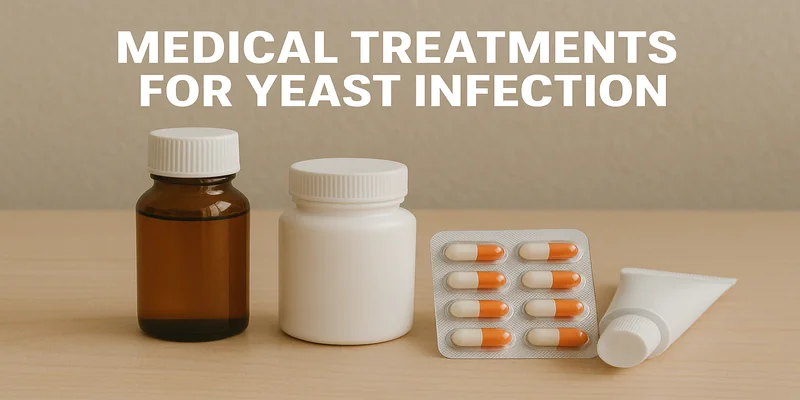
When professional help is needed, doctors have proven that medical treatments are often the fastest and most effective:
- Over-the-Counter (OTC) Antifungal Creams, Tablets, or Suppositories: These are available in 1-day, 3-day, or 7-day courses and contain active ingredients like miconazole (Monistat), clotrimazole (Lotrimin, Mycelex, Canesten), or tioconazole (Vagistat-1). While OTC options have the same ingredients as prescription ones, they might be in less concentrated doses. They work by killing the fungus or preventing its growth.
- Oral Medications: Prescription pills like fluconazole (Diflucan) are highly effective and convenient for many. A single dose of 150 mg is often enough for mild, uncomplicated infections, with symptom relief typically noticed within 24 hours and full clearance in about a week. For more severe or recurrent infections, your doctor might recommend multiple doses or a weekly preventive dose for several months. Other newer prescription oral options include ibrexafungerp (Brexafemme) and oteseconazole (Vivjoa).
- Prescription Vaginal Treatments: For specific cases, doctors might prescribe stronger vaginal treatments, such as terconazole (Terazol) or nystatin. Boric acid suppositories, though sometimes available OTC, are often medically suggested and can be prescribed, especially for recurrent or resistant yeast infections.
Ultimately, for prompt and reliable relief, especially for severe or recurrent infections, consulting a healthcare provider is the best course of action.
Preventing Future Yeast Infections

Once you’ve dealt with a yeast infection, you’ll likely want to do everything you can to prevent it from coming back. Beyond “yeast infection remedies” for treatment, there are many simple lifestyle adjustments and habits that can significantly reduce your risk of future infections. Prevention is often about creating an environment where yeast is less likely to thrive and supporting your body’s natural defenses.
A. Lifestyle Adjustments:
- Manage Sugar Intake: Limit the amount of sugar and processed foods you consume. Yeast feeds on sugar, so reducing it in your diet can help starve the Candida fungus.
- Choose Breathable Underwear: Opt for loose-fitting, breathable cotton underwear. Cotton allows air to circulate, helping to keep the vaginal area cool and dry. When doing laundry, wash your underwear in hot water using a mild, unscented detergent.
- Avoid Damp Environments: Yeast thrives in warm, moist environments. Avoid spending extended periods in wet bottoms or bathing suits, and change out of sweaty workout clothes right away. Shower after exercise to remove moisture.
- Control Blood Sugar: If you have diabetes, keeping your blood sugar under control is very important, as high blood sugar levels can increase your susceptibility to yeast infections.
- Boost Immune System: A strong immune system can help your body fight off infections. Ensure you get enough sleep and regular exercise to support your immune health.
- Judicious Antibiotic Use: Only use antibiotics when necessary. Antibiotics kill off beneficial bacteria in your body, including those in the vaginal area, which can upset the natural balance and lead to yeast overgrowth.
B. Avoiding Irritants:
- Say No to Douching and Scented Products: Do not douche unless specifically advised by a doctor, and avoid vaginal deodorant sprays, scented vaginal lotions, talcum powder, bubble baths, bath bombs, and scented menstrual products. These products can disrupt your vaginal pH and upset the delicate balance of bacteria and yeast.
- Use Fragrance-Free Soaps: When cleaning your vulva, it’s best to keep it simple with warm water and a sensitive skin-friendly, fragrance-free soap. The inside of your vaginal area is self-cleaning and doesn’t need soap or cleaning products.
- Proper Wiping: Always wipe from front to back after using the toilet to prevent bacteria from the anus from entering the vaginal area.
- Avoid Hot Water Soaks: Limit time in hot baths and hot tubs, as yeast thrives in warm, moist environments. Opt for lukewarm water when showering or bathing.
C. Probiotic Integration:
- Include Probiotics in Your Diet: Regularly include yogurt or supplements with Lactobacillus in your diet. These healthy bacteria can help maintain a balanced vaginal flora, reducing the chances of yeast overgrowth. If choosing supplements, look for those that are third-party tested for quality and safety, as the FDA does not regulate them.
By incorporating these preventive measures into your routine, you can significantly reduce the likelihood of experiencing recurrent yeast infections and maintain better vaginal health.
Conclusion: Informed Choices for Fast Relief and Lasting Health
Dealing with a yeast infection can be a frustrating and uncomfortable experience, prompting many to seek fast and effective “yeast infection remedies.” As we’ve explored, a variety of home remedies exist, ranging from probiotics and natural oils to acidic solutions and dietary adjustments. While some of these options may offer temporary relief from bothersome symptoms like itching and irritation, their effectiveness can vary significantly from person to person and often lacks robust scientific backing.
It’s crucial to remember that symptoms of a yeast infection can mimic those of other vaginal conditions, such as bacterial vaginosis (BV) or sexually transmitted infections (STIs), which require different treatments. Self-diagnosing can be inaccurate and lead to delays in proper care or even worsen your symptoms.
Therefore, while exploring home remedies for comfort, always prioritize consulting a healthcare professional for a proper diagnosis. This is especially important if it’s your first yeast infection, if your symptoms are severe, if home remedies don’t bring improvement within a few days, or if infections recur frequently. Doctors can offer the fastest and most reliable treatments, such as oral antifungal medications like fluconazole or over-the-counter creams and suppositories, which are proven to clear infections effectively.
By understanding both the potential benefits and limitations of “yeast infection remedies” and when to seek professional medical advice, you can make informed choices to achieve speedy relief and maintain lasting vaginal health. Your well-being is paramount, and a healthcare provider is your best partner in navigating these common health concerns.
4 Sources:
Noble Home Remedies relies on peer-reviewed studies, academic research institutions, and medical associations for accuracy and reliability while avoiding tertiary references. Our editorial policy provides more information about how we ensure our content is accurate and up-to-date.
- 11 Home Remedies for Vaginal Yeast Infections
https://www.healthline.com/health/womens-health/yeast-infection-home-remedy - Does fluconazole flush out yeast/discharge?
https://www.drugs.com/medical-answers/fluconazole-flush-yeast-discharge-3571333/ - How Quickly Does Fluconazole Work?
https://www.verywellhealth.com/how-long-does-it-take-for-fluconazole-to-work-7567434 - Yeast Infection Treatments
https://www.webmd.com/women/yeast-infection-treatments-prescription-drugs - How to Get Rid of a Vaginal Yeast Infection
https://www.goodrx.com/conditions/yeast-infection/whats-the-best-way-to-treat-a-yeast-infection-fast - Treatment of Candidiasis
https://www.cdc.gov/candidiasis/treatment/index.html - 2 Vaginal Yeast Infection Treatments for Immediate Relief | Home Thrush Remedies to Avoid
https://www.pelvicexercises.com.au/vaginal-yeast-infection/ - 13 Natural Remedies To Help Cure Yeast Infection Quickly
https://www.verywellhealth.com/home-remedies-for-yeast-infections-5176162 - How to get rid of a yeast infection
https://www.medicalnewstoday.com/articles/317935 - Remedies for Yeast Infections
https://www.webmd.com/women/remedies-yeast-infections - Do Home Remedies Actually Work for Yeast Infections?
https://health.clevelandclinic.org/do-home-remedies-actually-work-for-yeast-infections - Treating Yeast Infections and BV at Home: What Really Works
https://www.evvy.com/blog/home-remedies-for-yeast-infections
Trust in your purchase:
Every product featured on our site has been carefully researched and selected based on quality, customer ratings, and positive reviews to ensure you receive excellent value for your money.
Please note:
This post contains affiliate links. If you make a purchase through these links, we may earn a small commission at no additional cost to you. This helps support our site and allows us to continue bringing you valuable content. Thank you!
Thank you for your precious time spent with NobleHomeRemedies.
You may also like:
12 Sore Throat Home Remedies and for Kids
12 Sore Throat Home Remedies and for Kids – Quick Relief If you are experiencing…
How to Get Rid of Fordyce Spots
How to Get Rid of Fordyce Spots: 5 Effortless Home Remedies Fordyce spots are those…
Epsom Salt Stress Relief
Epsom Salt Stress Relief: Guide to Instant Calm in 5 Steps Stress is an unavoidable…
Anti-inflammation Recipes
20 Anti-Inflammation Recipes: Delicious Meals to Heal Your Body This article is your friendly guide…
Home Remedies for Gum Boils
7 Powerful Home Remedies for Gum Boils: For A Quick Relief! Are you suffering from…
Diet for Gastroparesis
Diet for Gastroparesis: What Foods to Eat and Avoid + 7 Tips If you have…

